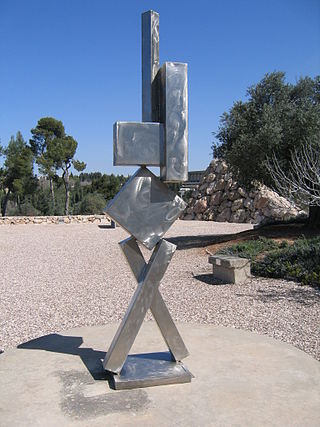
Abstract expressionism in the United States emerged as a distinct art movement in the immediate aftermath of World War II and gained mainstream acceptance in the 1950s, a shift from the American social realism of the 1930s influenced by the Great Depression and Mexican muralists. The term was first applied to American art in 1946 by the art critic Robert Coates. Key figures in the New York School, which was the epicenter of this movement, included such artists as Arshile Gorky, Jackson Pollock, Franz Kline, Mark Rothko, Norman Lewis, Willem de Kooning, Adolph Gottlieb, Clyfford Still, Robert Motherwell and Theodoros Stamos among others.

Visual art of the United States or American art is visual art made in the United States or by U.S. artists. Before colonization, there were many flourishing traditions of Native American art, and where the Spanish colonized Spanish Colonial architecture and the accompanying styles in other media were quickly in place. Early colonial art on the East Coast initially relied on artists from Europe, with John White the earliest example. In the late 18th and early 19th centuries, artists primarily painted portraits, and some landscapes in a style based mainly on English painting. Furniture-makers imitating English styles and similar craftsmen were also established in the major cities, but in the English colonies, locally made pottery remained resolutely utilitarian until the 19th century, with fancy products imported.
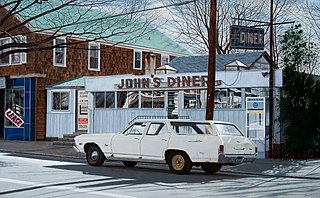
Photorealism is a genre of art that encompasses painting, drawing and other graphic media, in which an artist studies a photograph and then attempts to reproduce the image as realistically as possible in another medium. Although the term can be used broadly to describe artworks in many different media, it is also used to refer specifically to a group of paintings and painters of the American art movement that began in the late 1960s and early 1970s.
Philip Martin Pearlstein was an American painter best known for Modernist Realist nudes. Cited by critics as the preeminent figure painter of the 1960s to 2000s, he led a revival in realist art.

Don Eddy is a contemporary representational painter. He gained recognition in American art around 1970 amid a group of artists that critics and dealers identified as Photorealists or Hyperrealists, based on their work's high degree of verisimilitude and use of photography as a resource material. Critics such as Donald Kuspit have resisted such labels as superficially focused on obvious aspects of his painting while ignoring its specific sociological and conceptual bases, dialectical relationship to abstraction, and metaphysical investigations into perception and being; Kuspit wrote: "Eddy is a kind of an alchemist … [his] art transmutes the profane into the sacred—transcendentalizes the base things of everyday reality so that they seem like sacred mysteries." Eddy has worked in cycles, which treat various imagery from different formal and conceptual viewpoints, moving from detailed, formal images of automobile sections and storefront window displays in the 1970s to perceptually challenging mash-ups of still lifes and figurative/landscapes scenes in the 1980s to mysterious multi-panel paintings in his latter career. He lives in New York City with his wife, painter Leigh Behnke.
The Bay Area Figurative Movement was a mid-20th Century art movement made up of a group of artists in the San Francisco Bay Area who abandoned working in the prevailing style of Abstract Expressionism in favor of a return to figuration in painting during the 1950s and onward into the 1960s.
Will Barnet was an American artist known for his paintings, watercolors, drawings, and prints depicting the human figure and animals, both in casual scenes of daily life and in transcendent dreamlike worlds.
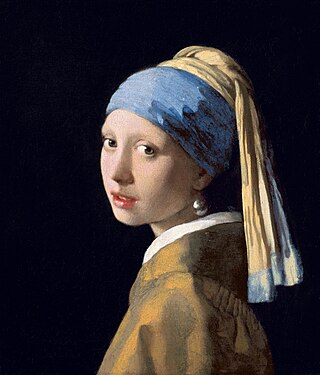
The history of Western painting represents a continuous, though disrupted, tradition from antiquity until the present time. Until the mid-19th century it was primarily concerned with representational and Classical modes of production, after which time more modern, abstract and conceptual forms gained favor.

Classical Realism is an artistic movement in the late-20th and early 21st century in which drawing and painting place a high value upon skill and beauty, combining elements of 19th-century neoclassicism and realism.

New York Figurative Expressionism is a visual arts movement and a branch of American Figurative Expressionism. Though the movement dates to the 1930s, it was not formally classified as "figurative expressionism" until the term arose as a counter-distinction to the New York–based postwar movement known as Abstract Expressionism.

20th-century Western painting begins with the heritage of late-19th-century painters Vincent van Gogh, Paul Cézanne, Paul Gauguin, Georges Seurat, Henri de Toulouse-Lautrec, and others who were essential for the development of modern art. At the beginning of the 20th century, Henri Matisse and several other young artists including the pre-cubist Georges Braque, André Derain, Raoul Dufy and Maurice de Vlaminck, revolutionized the Paris art world with "wild", multi-colored, expressive landscapes and figure paintings that the critics called Fauvism. Matisse's second version of The Dance signified a key point in his career and in the development of modern painting. It reflected Matisse's incipient fascination with primitive art: the intense warm color of the figures against the cool blue-green background and the rhythmical succession of the dancing nudes convey the feelings of emotional liberation and hedonism.

American Figurative Expressionism is a 20th-century visual art style or movement that first took hold in Boston, and later spread throughout the United States. Critics dating back to the origins of Expressionism have often found it hard to define. One description, however, classifies it as a Humanist philosophy, since it is human-centered and rationalist. Its formal approach to the handling of paint and space is often considered a defining feature, too, as is its radical, rather than reactionary, commitment to the figure.

Janet Fish is a contemporary American realist artist. Through oil painting, lithography, and screenprinting, she explores the interaction of light with everyday objects in the still life genre. Many of her paintings include elements of transparency, reflected light, and multiple overlapping patterns depicted in bold, high color values. She has been credited with revitalizing the still life genre.

John Moore is an American contemporary realist painter. His art has focused on studio interiors, still lifes, and in his best-known work, cityscapes and the American post-industrial landscape of dilapidated mill towns and factories. He emerged in the early 1970s amid a resurgence of representational work, appearing in many surveys and critical examinations that helped define new modes of American realism. While the highly detailed nature of his work evokes that movement, it diverges from approaches such as photorealism in its social concern, painterly handling and composite compositions, which distill direct observation, sketches, memories and photographs of multiple sites and views into re-imagined but believable scenes. Curator John Stomberg wrote of these constructed worlds: "The image he creates is only real in the painting, yet all the parts do have their origins in the observable world. Therein lies the eerie potency of Moore's vision—its plausibility. He is more of a spectacular fabulist than a realist."

Frank Stout was an American figurative artist associated with post-abstract expressionist realism. He is best known for his psychologically penetrating, witty and deeply compassionate portraits of individuals and large groups, and soulful landscapes executed with a painterly technique. He is also known for flowing figure sculpture in a variety of media, and his pastel drawings.
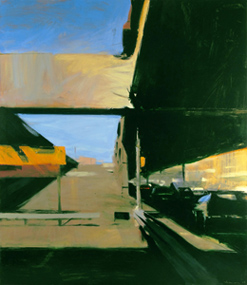
Ben Aronson is an American painter living in Massachusetts. His work is represented by Tibor de Nagy Gallery in New York, Jenkins Johnson Gallery in San Francisco, LewAllen Galleries in Santa Fe, and Alpha Gallery in Boston.
Walter Henry "Jack" Beal Jr. was an American realist painter.

Realism was an artistic movement that emerged in France in the 1840s, around the 1848 Revolution. Realists rejected Romanticism, which had dominated French literature and art since the early 19th century. Realism revolted against the exotic subject matter and the exaggerated emotionalism and drama of the Romantic movement. Instead, it sought to portray real and typical contemporary people and situations with truth and accuracy, and not avoiding unpleasant or sordid aspects of life. The movement aimed to focus on unidealized subjects and events that were previously rejected in art work. Realist works depicted people of all classes in situations that arise in ordinary life, and often reflected the changes brought by the Industrial and Commercial Revolutions. Realism was primarily concerned with how things appeared to the eye, rather than containing ideal representations of the world. The popularity of such "realistic" works grew with the introduction of photography—a new visual source that created a desire for people to produce representations which look objectively real.
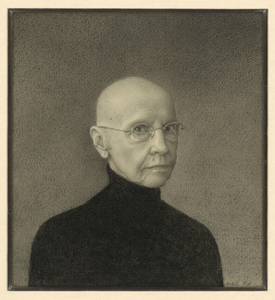
Martha Mayer Erlebacher was an American painter. She attended Gettysburg College from 1955 to 1956. She received a BA in Industrial Design from the Pratt Institute. She also received an MFA from Pratt in 1963. She is known for her trompe-l'œil still lifes and well as her representational figurative work of the nude body. She was influenced by eighteenth- and nineteenth-century Italian and French painting traditions and well as by the realist Thomas Eakins.

Sidney Tillim was an American artist and art critic, known for his maverick painting and independent point of view on modern art in post-war America. Best remembered for his revival of history painting in the 1970s, Tillim alternated between the figurative and the abstract throughout his career. Likewise, although he wrote on a wide range of topics for Artforum and Arts Magazine, he is most identified with supporting representational art when few did.















